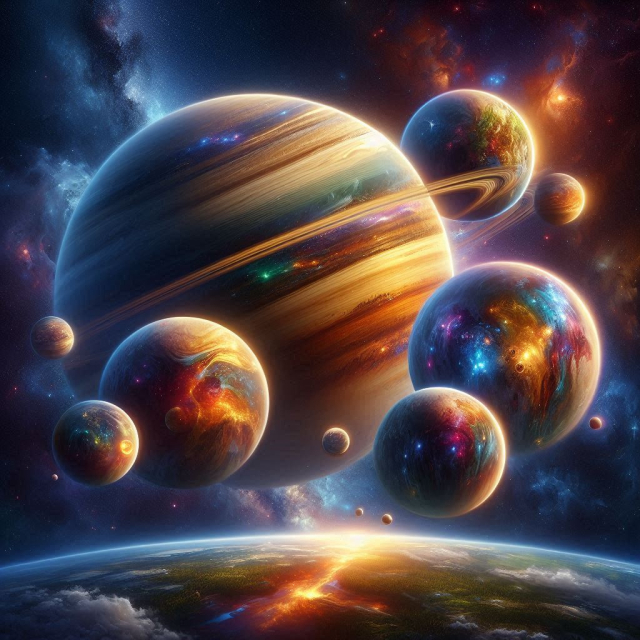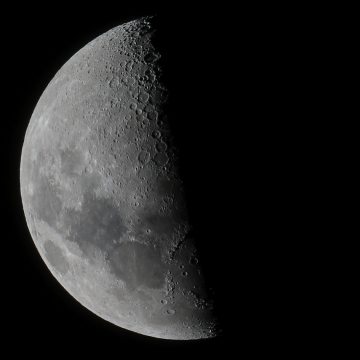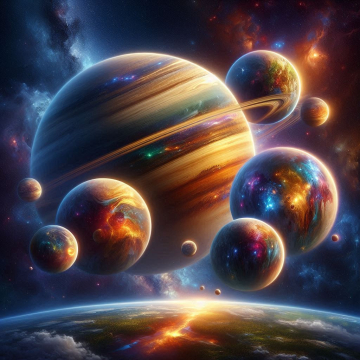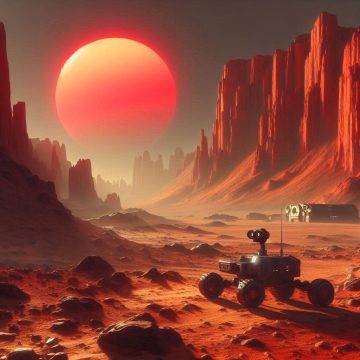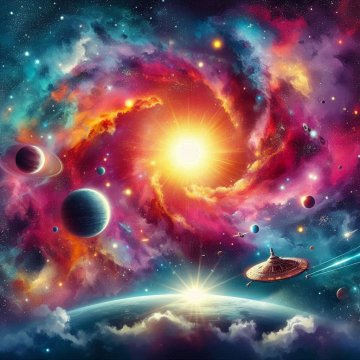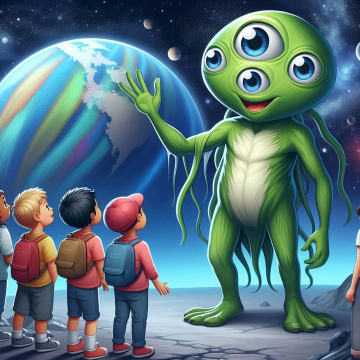The universe is vast and mysterious, and as technology and science advance, astronomers have discovered a wealth of exoplanets, or planets outside our solar system, that defy expectations and expand our understanding of what distant worlds may be like. These planets are fascinating not only for their characteristics, but also for the possibility that some of them may harbor life or feature extreme conditions beyond anything we've ever imagined.
Kepler-22b: An Earth-Like World.
Kepler-22b is one of the most fascinating planets found by NASA's Kepler mission. Discovered in 2011, Kepler-22b lies about 600 light-years from Earth and is considered a "habitable zone exoplanet," meaning it is at a distance from its star where liquid water could exist on its surface.
Kepler-22b is about 2.4 times the size of Earth, making it a "super-Earth." Although it is not known for certain whether it is a rocky or gas planet, the possibility that it has conditions suitable for life has made it one of the most exciting targets in the search for extraterrestrial life.
HD 189733b: A gas giant with glass rains.
One of the most impressive planets is HD 189733b, a gas giant located 64 light years from Earth. This planet is extremely close to its star, making it a "hot Jupiter." The most fascinating feature of HD 189733b is its climate, which is absolutely terrifying. Temperatures on its surface reach 930 degrees Celsius, and winds reach speeds of up to 8,700 kilometers per hour, that is, 7 times the speed of sound.
But the most incredible thing is its atmosphere: scientists believe that particles of molten glass rain down on this planet, carried by hurricane-force winds. This would make walking on the surface of HD 189733b a true hell, where tiny glass droplets would fly at extreme speeds. These kinds of extreme conditions demonstrate the wide variety of environments that planets can have elsewhere in the universe.
Gliese 581g: A possible home for life.
One of the most debated exoplanets is Gliese 581g, which is located just 20 light-years from Earth, orbiting the red dwarf star Gliese 581. This planet, also classified as a "super-Earth," is Gliese 581g is located in the habitable zone of its star, which has sparked a lot of speculation about the possibility of it being a habitable planet.
Gliese 581g is about 1.5 times larger than Earth, meaning it could have similar gravity to our planet. However, what makes this planet particularly intriguing is that its orbit is "tidally locked," meaning one side of the planet is always facing its star, while the other side is always in darkness. This would create a planet with one side extremely hot and one side extremely cold, although there could be a habitable zone in the twilight zone between these two extremes, where temperatures could be more moderate.
Although the existence of Gliese 581g has not yet been confirmed, the mere fact that there could be a planet in this habitable zone has been a source of great scientific interest.
WASP-12b: A planet devoured by its star.
WASP-12b is a planet that is being destroyed by its host star. This gas giant, discovered in 2008, is Located 1,400 light-years from Earth, WASP-12b is a hot Jupiter that orbits so close to its star that it completes one revolution in just 1.1 Earth days. Because of this proximity, temperatures on its surface reach 2,200 degrees Celsius, making it one of the hottest planets known.
What makes WASP-12b particularly interesting is that its star is slowly devouring it. The star's enormous gravity stretches the planet, deforming it into an oval shape and ripping material from its atmosphere at an alarming rate. This planet has an inescapable fate: in a few million years, it will be completely consumed by its star.
55 Cancri e: A diamond planet.
One of the most surprising discoveries in the search for exoplanets is 55 Cancri e, a planet that appears to be composed largely of carbon, suggesting that it could be, for the most part, a diamond giant. This planet, which is about 40 light-years from Earth, is another hot Jupiter, with temperatures reaching 2,400 degrees Celsius.
The idea that 55 Cancri e could be composed of diamonds comes from its high amount of carbon and its proximity to its star. If this hypothesis is correct, it would mean that exoplanets could have radically different compositions than planets in our solar system. While the idea of a planet made of diamonds sounds like something out of science fiction, 55 Cancri e reminds us how strange and varied planet formation can be in the universe.
Trappist-1e, f, and g: A solar system with possible habitable worlds.
The TRAPPIST-1 system has been one of the most exciting discoveries in the search for habitable exoplanets. This system, located about 39 light-years from Earth, contains at least seven Earth-sized planets, three of which (TRAPPIST-1e, TRAPPIST-1f and TRAPPIST-1g) are in the habitable zone of their star.
What makes TRAPPIST-1 so special is that all of its planets are rocky and may have liquid water on their surfaces, increasing the possibility that some of them could support life. Additionally, the proximity of these planets to their star allows them to be studied in greater detail, making this system one of the most important in the search for extraterrestrial life.
Proxima b: The closest exoplanet to Earth.
Proxima b is another exoplanet that has captured the attention of the scientific community. Orbiting around the closest star to the Sun, Proxima Centauri, this planet is only 4.24 light years away. Proxima b is a "super-Earth" It is located in the habitable zone of its star, meaning it could have liquid water on its surface.
This planet has been the subject of much interest due to its proximity and the fact that its star, Proxima Centauri, is a relatively inactive red dwarf. Although its closeness to Earth makes it a tempting target for future interstellar missions, there are many challenges to face, such as the high levels of radiation emitted by its star.
The discovery of exoplanets has opened a fascinating window into the possibilities offered by the universe. From scorching gas giants to ice-filled worlds, each planet teaches us something new about the extreme conditions that can exist in space and the various ways in which planets can form and evolve. Although many of these planets appear uninhabitable, their existence expands our understanding of what might be possible in terms of life and other cosmic phenomena. Over time, as technology continues to advance, we are likely to discover even more incredible planets that will challenge us to rethink what we think we know about the universe.
